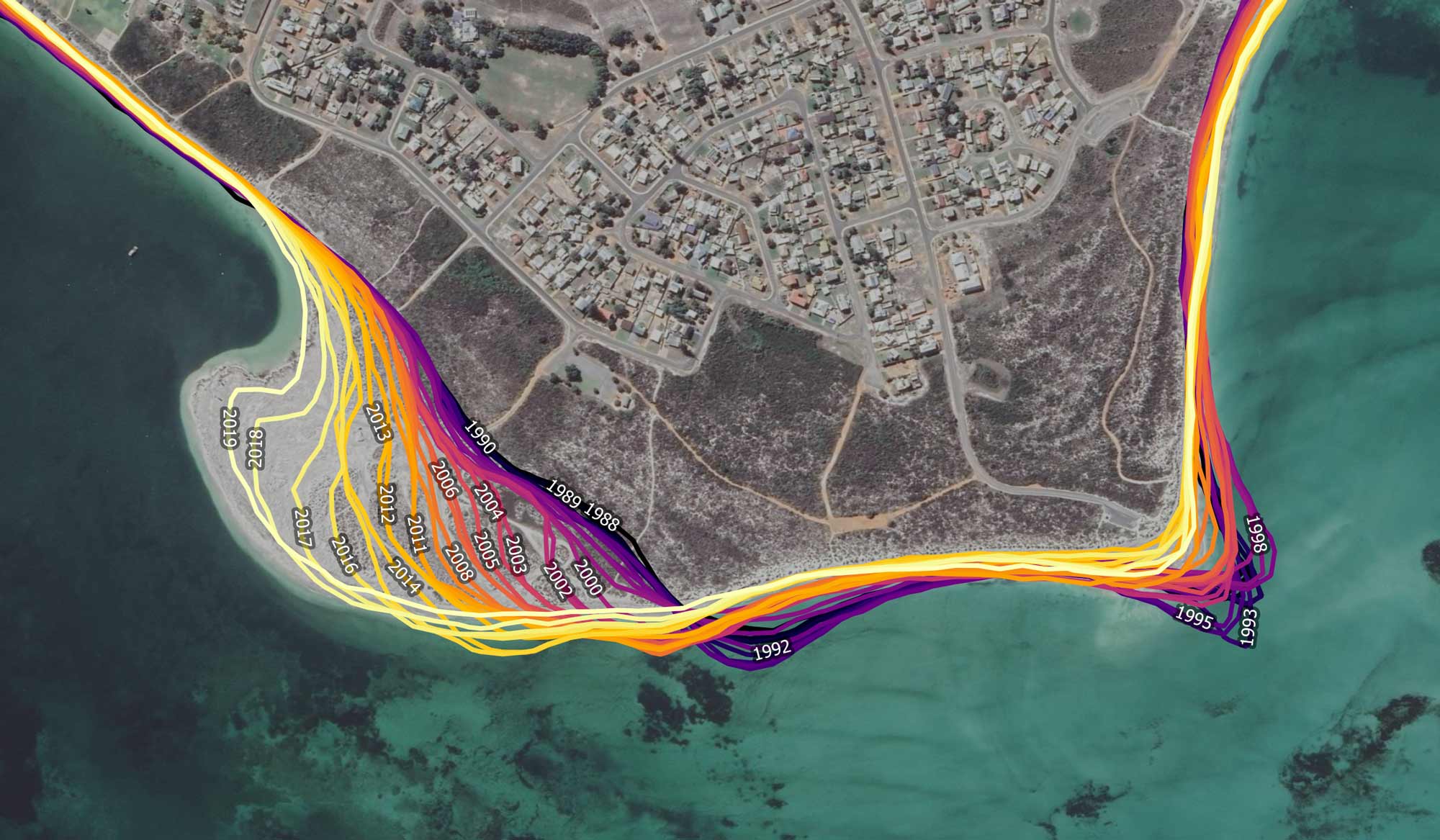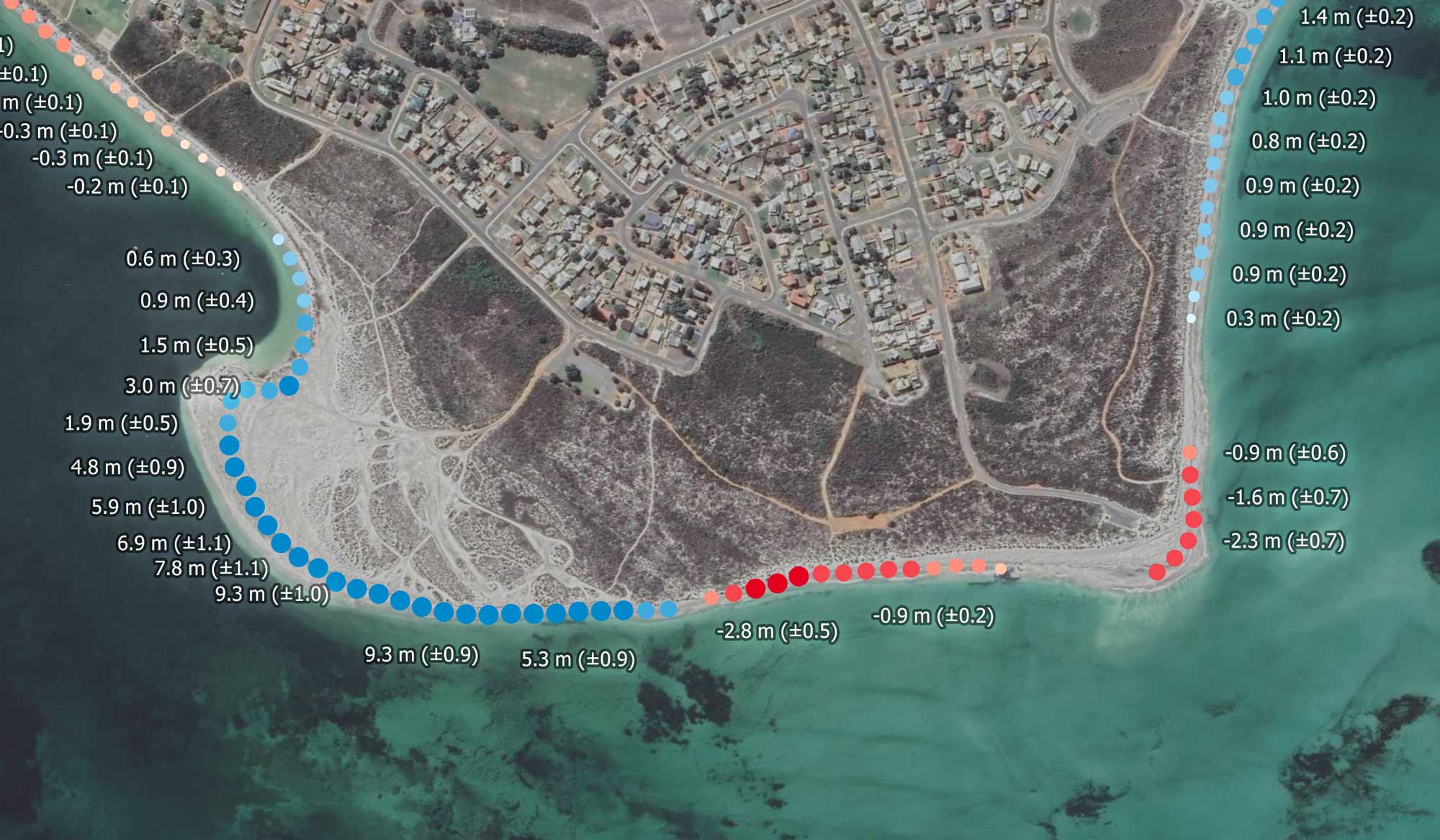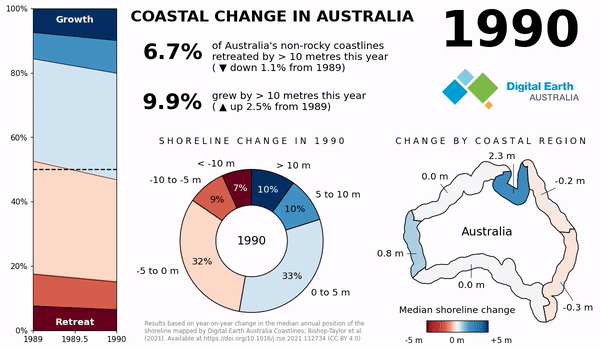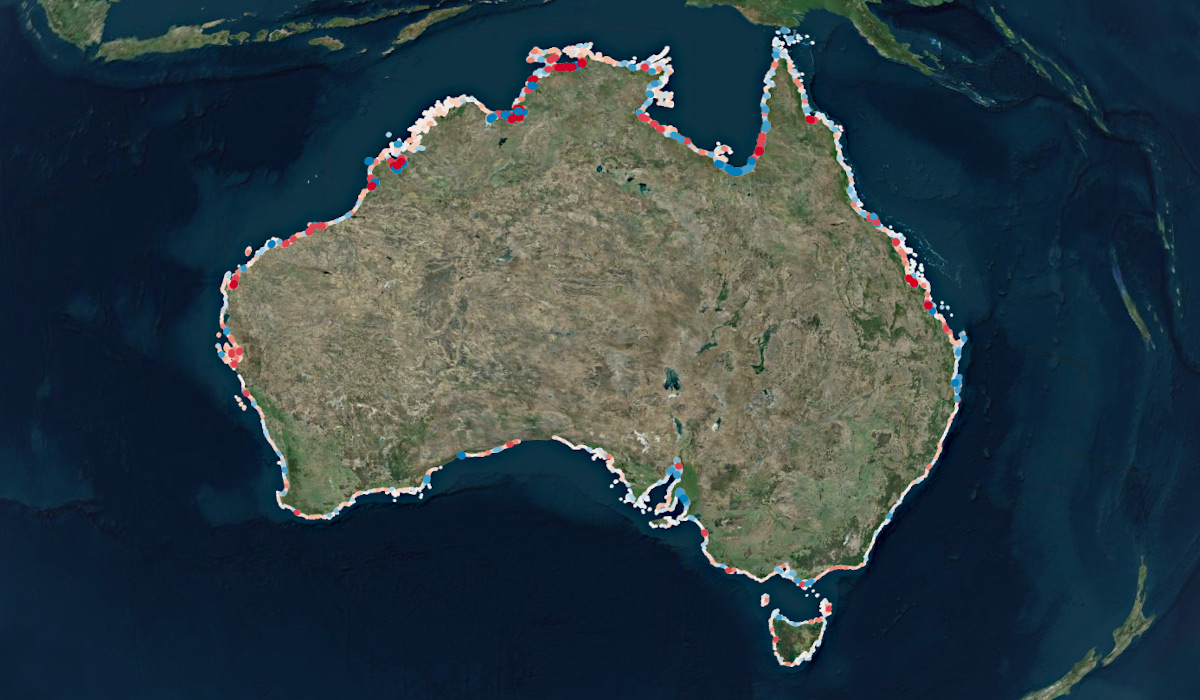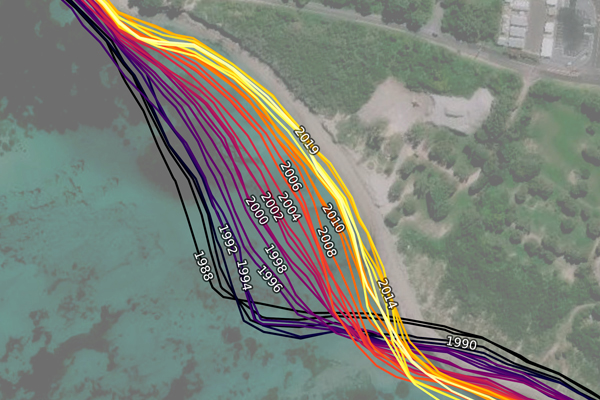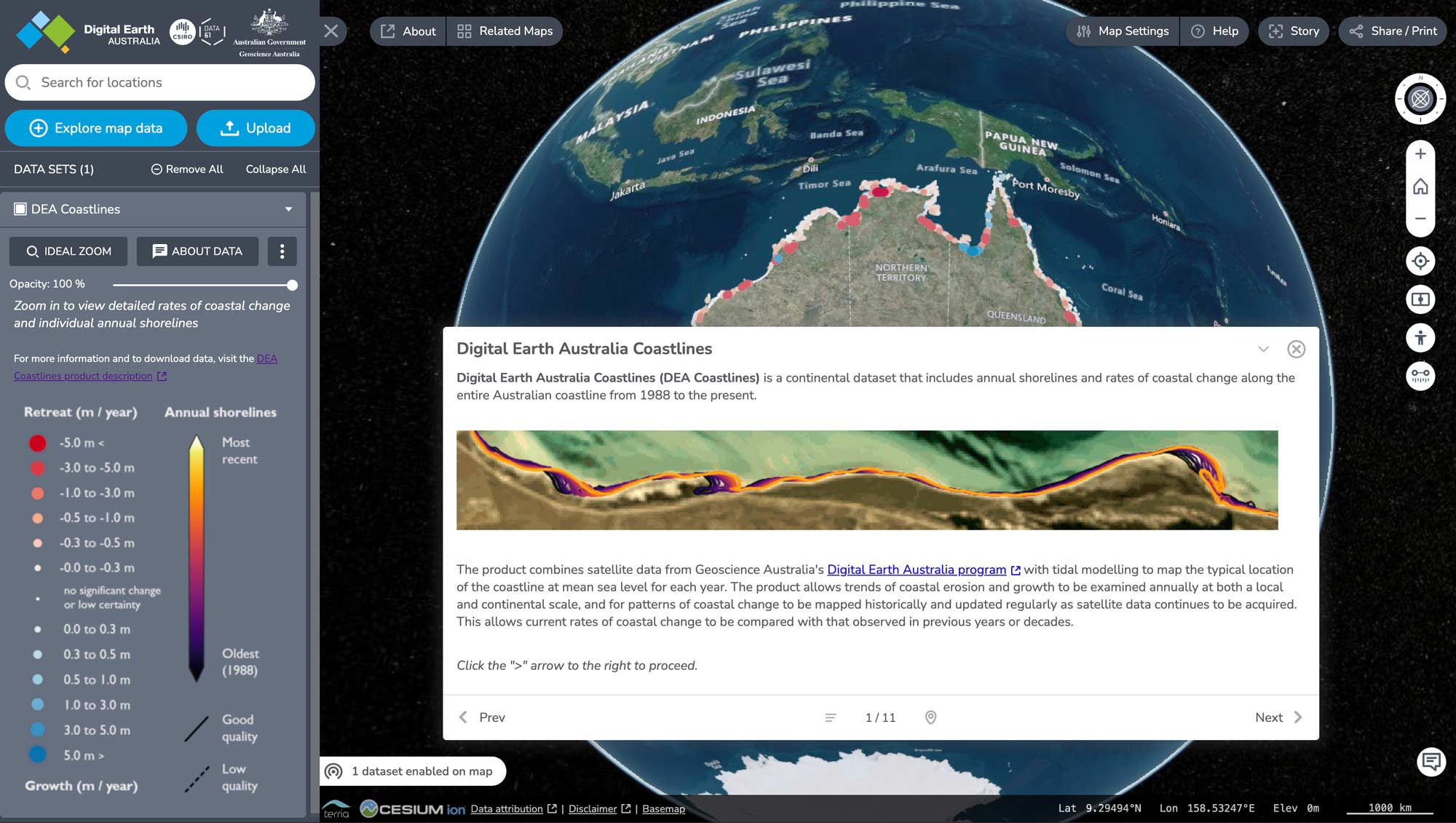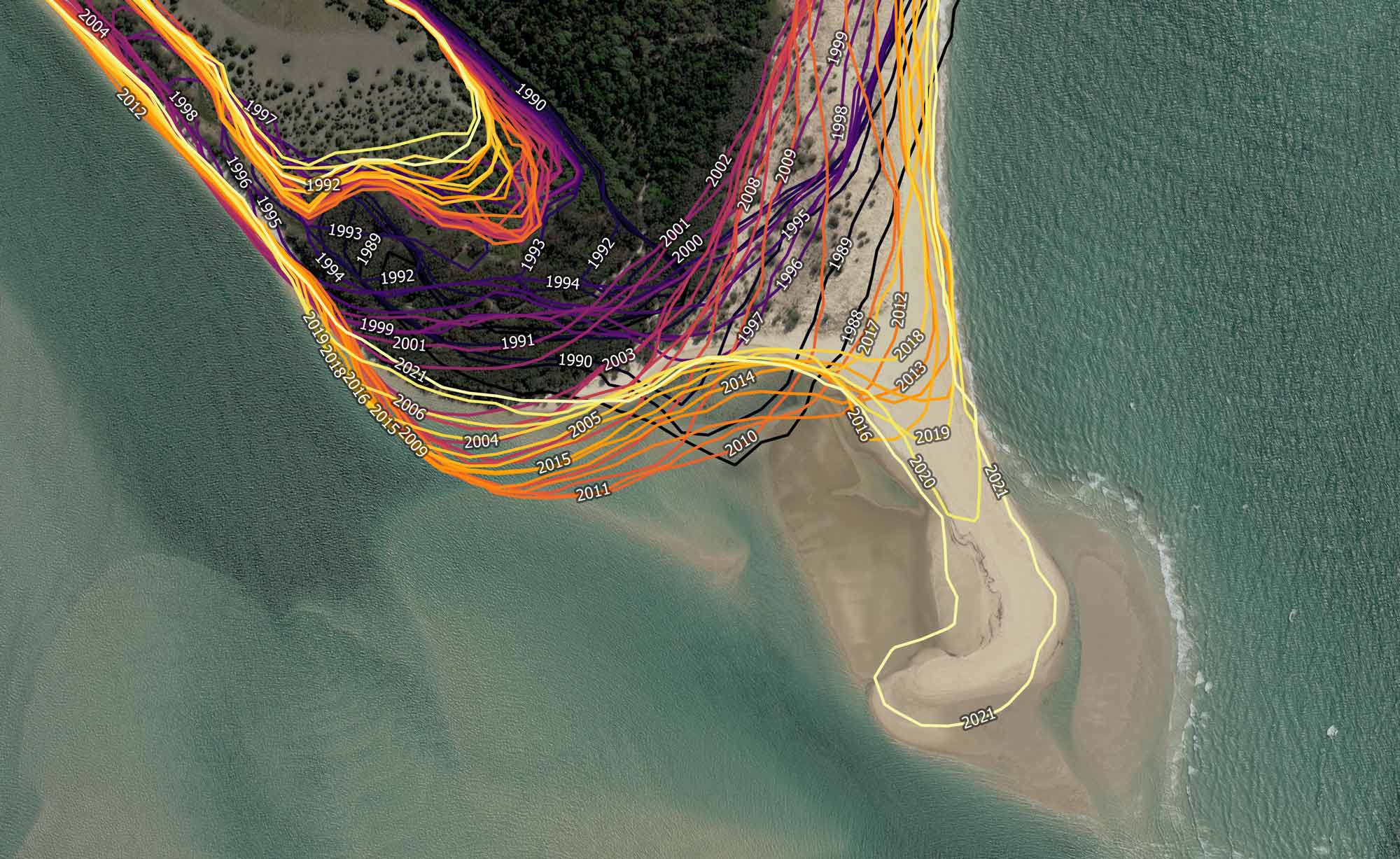Derived data product DEA Coastlines
Page last updated:29 April 2025
See decades of coastal change
DEA Coastlines combines satellite data with tidal modelling to map the changing location of Australia's coastline since 1988. Resulting annual shorelines and detailed rates of change show how beaches, sandspits, river mouths, and tidal flats have grown and eroded over time.
The product draws on nearly 58,000 independent measurements to ensure accuracy, supported by local councils, state governments, citizen scientists and academia.
DEA Coastlines data accurately maps rates of coastal change and hotspots of erosion and growth at every 30 metres along the entire Australian coastline.
DEA Coastlines interactive map
Visit DEA Maps to get the full interactive map with DEA Coastlines and other DEA products.
Why track changing coastlines?
- Provide new insights to scientists, coastal managers, local communities and policymakers
- Model how coastlines respond to drivers of change, including extreme weather events, sea level rise and urban development
- Prioritise and evaluate impacts of local and regional coastal management decisions
- Support research into how and why coastlines have changed over time

Imagery for impact The growing sands of Twilight Cove
Get a snapshot of the stories revealed by DEA Coastlines, including how one remote and spectacular Western Australian beach has grown by more than 500 m since 1988.
